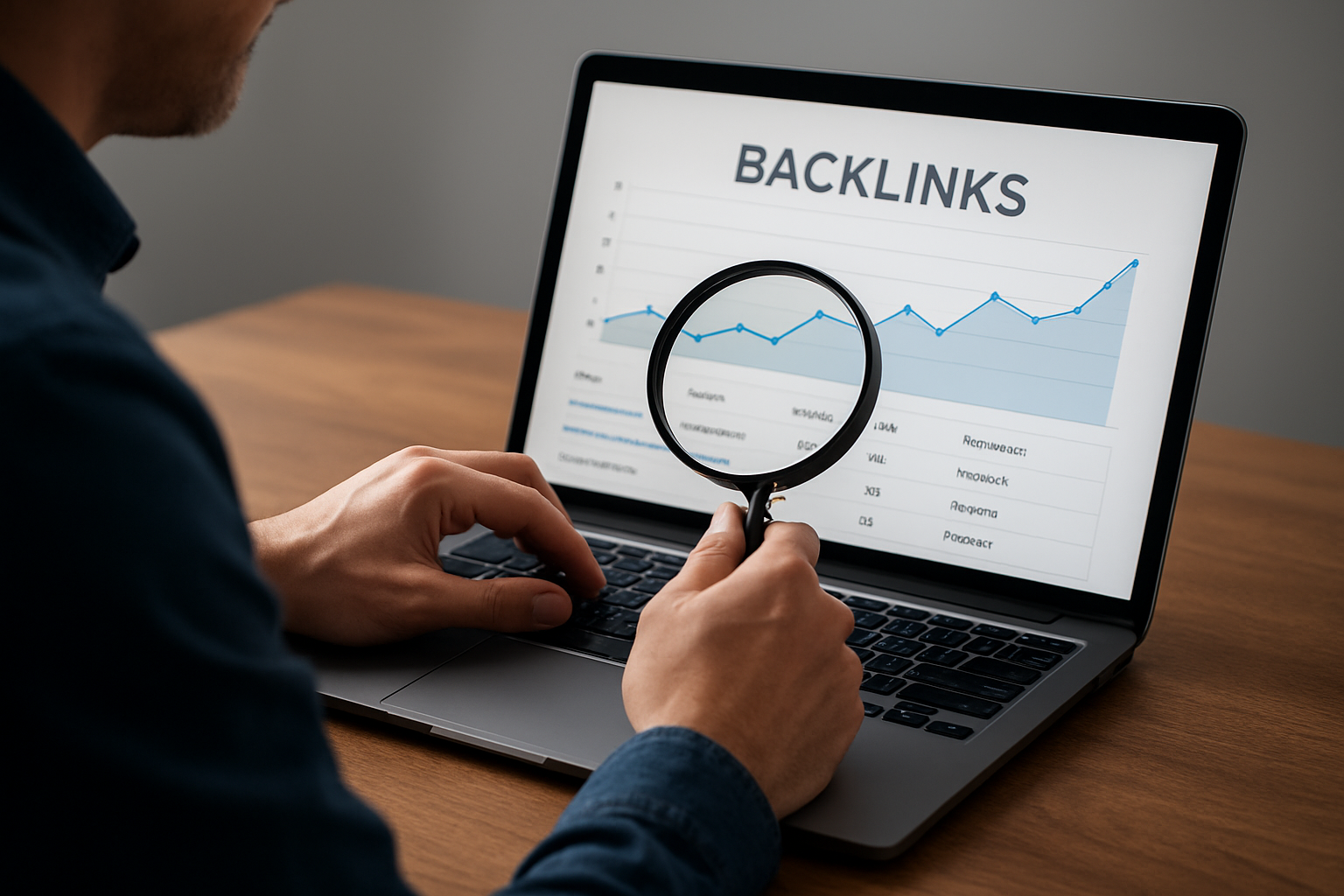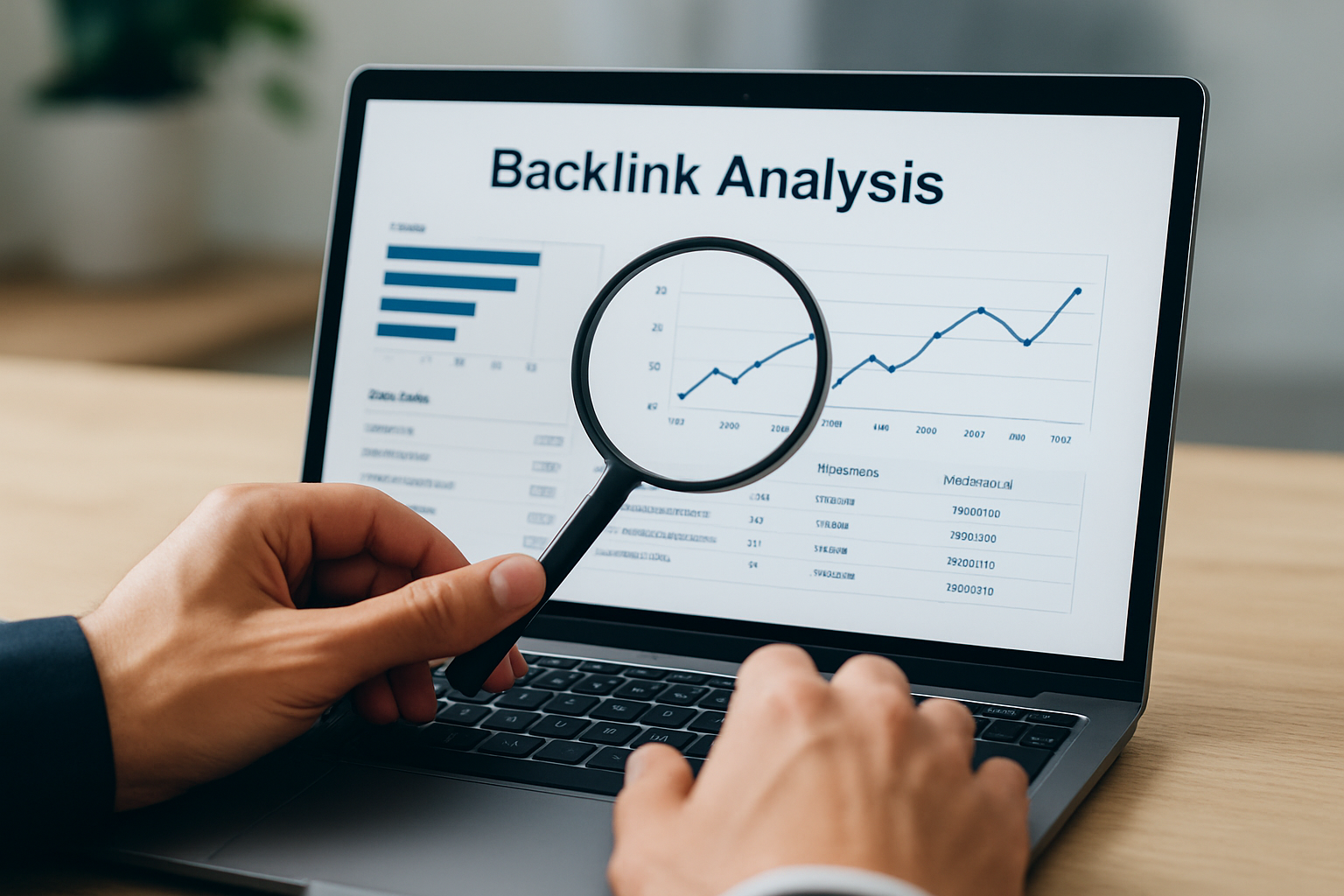If you care about rankings, conversions, and trust, you need a repeatable process for checking backlinks, not just a quick look at a few referring domains. Think of your backlink profile like your company’s credit report—lenders and partners judge you by it, and search engines do too, so you want it accurate, healthy, and growing. I’ve audited thousands of links for companies of all sizes, and the pattern is always the same: strong links from relevant sites lift your visibility, while toxic ones bury your content no matter how good your on-page work is. In this guide, I’ll walk you through a field-tested approach we use at Internetzone I for National and Local SEO (Search Engine Optimization), blending practical steps, data tables, and real examples so you can fix what’s broken and compound what’s working.
Why Backlinks Still Rule: What Search Engines See
Let’s cut through the noise—search engines rely on links to estimate relevance, authority, and trust, which means the quality and context of each link matter more than raw totals. Correlation studies consistently show that pages with more unique referring domains tend to earn more organic traffic, yet it’s not just quantity that wins but topical alignment, anchor text, and the authority of linking pages. When we audit, we look beyond vanity metrics to the mechanics: how a link passes equity, whether it’s followed or nofollowed, and how it fits your content’s intent and your brand’s risk tolerance. If you’ve ever wondered why a competitor outranks you with similar content, chances are their link graph is more trustworthy, diversified, and fresher across industry-relevant sites.
Here’s the kicker—link intent matters just as much as link power, because a relevant citation from a respected trade journal can beat a generic blog blast ten to one. At Internetzone I, we see local businesses gain map pack traction when they earn niche citations, local news mentions, and chamber links, even if their overall link count is modest. For national brands, authoritative mentions from analysts, research hubs, or major publishers can move entire product categories, especially when the anchors align with high-intent keywords. That’s why we evaluate not only the source but the story of each link—who’s linking, why they linked, and how that link supports your positioning across National and Local SEO (Search Engine Optimization).
Checking Backlinks 101: Metrics That Matter Most
Metrics are your compass, but they only help if you read them together, not in isolation or as a single score. You’ll want to track referring domains, follow vs. nofollow balance, anchor text distribution, topical relevance, and link velocity to understand whether your profile looks organic or manufactured. Add in authority indicators like domain rating or authority score, spam indicators like over-optimized anchors, and page-level context like whether the linking page actually gets traffic, and you have the beginnings of a real audit. As you review, ask simple questions: Would I be proud to show this link to a top customer, does it help a human, and would it exist if search engines didn’t?
Watch This Helpful Video
To help you better understand checking backlinks, we’ve included this informative video from The Conversion Clinic — by JRR Marketing. It provides valuable insights and visual demonstrations that complement the written content.
Use the following table as a quick reference while you work through your data so you can spot risks and opportunities faster and align your actions with measurable outcomes. Notice how each metric ties directly to a decision, whether that’s to pursue similar links, neutralize risk, or deepen relevance around a product or city. Keep your eye on balance and momentum, because a healthy profile grows steadily from diverse, contextually aligned sources rather than spiking in bursts from low-quality directories. When you benchmark, compare against top competitors in your niche rather than generic averages, especially if you operate in a regulated or location-sensitive category.
| Metric | What It Tells You | Healthy Benchmark | Action If Off-Track |
|---|---|---|---|
| Referring Domains | Unique sites linking to you | Consistent monthly growth | Launch steady outreach and partnerships |
| Follow vs. Nofollow | Equity passing vs. hints | Diverse, natural mix | Prioritize follow links from relevant sources |
| Anchor Text | Context and risk level | Mostly branded or natural | Dial back exact-match, pursue branded mentions |
| Topical Relevance | Subject fit of linking pages | High alignment with your industry | Target niche blogs, associations, and journals |
| Link Velocity | Growth rate over time | Smooth, non-spiky trend | Shift from burst campaigns to ongoing programs |
| Lost Links | Churn in your profile | Low month-over-month loss | Reclaim via outreach or update content |
Tools and Tactics: How to Collect Clean Link Data
Your audit is only as good as your data, so begin by consolidating exports from multiple sources and deduplicating before you draw conclusions. We typically combine Google Search Console with two leading third-party link indexes, then normalize by canonical destination, grouping by domain to avoid double-counting sitewide links and tracking first-seen and last-seen dates. While no single database sees every link, triangulating three sources catches most of what matters and lets you compare deltas month to month for reliable link velocity insights. If you manage multiple brands or locations, map links to the correct pages and regions so you can tune National and Local SEO (Search Engine Optimization) strategies without conflating them.
Below is a practical snapshot of commonly used tools and what they tend to do best in a day-to-day workflow. The goal is not to pick one winner but to build a dependable stack for discovery, validation, and action that suits your budget and team comfort. Remember to store your exports in a shared folder, tag them by date, and document your assumptions so future audits aren’t guessing games. At Internetzone I, our Managed Web Services pair this rigor with dashboards so leadership can see link growth alongside traffic, leads, and Return on Investment (ROI) trends.
| Tool | Free Data | Best For | Helpful Notes |
|---|---|---|---|
| Google Search Console | Yes | Verified domain link lists | Closest to how Google sees your links, limited granularity |
| Ahrefs | Limited | Large index, historical trends | Strong for link discovery and competitor gaps |
| Semrush | Limited | Competitive audits, toxicity scoring | Pairs well with outreach tracking |
| Moz | Limited | Authority scores, snapshots | Good for quick comparisons |
| Majestic | Limited | Topical trust flow | Useful for relevance mapping |
| Seobility | Yes | Entry-level checks | Handy for small sites or quick audits |
Diagnose Issues Fast: Toxic Links, Spam, and Disavow Decisions
Not all bad links are obvious, and overreacting can do more harm than good, so start with pattern recognition rather than a blanket disavow. Look for low-quality networks, irrelevant foreign-language blogs, link farms, spun content, and suspicious exact-match anchors pointing to money pages, then verify whether those pages get real traffic. If you see bursts of hundreds of links from scraper sites, relax—most are ignored algorithmically, and you can focus on contacting webmasters for removals only when there is sustained, manipulative activity. At Internetzone I, we reserve the disavow file for clear-cut spam patterns or manual actions, and we document each entry with reason codes to keep things defensible.
Use this quick table to triage common risk signals and actions so you can protect your site without clipping your own wings. The trick is to calibrate your response and lean into quality building rather than chasing every questionable mention across the internet. When in doubt, prioritize link earning—great content, digital PR, and helpful tools—because positive growth sends stronger signals than pruning alone. Pair that with Reputation Management and Pay-Per-Click (PPC) campaign data to understand which pages drive revenue, then protect those with extra care.
| Signal | Likely Cause | Recommended Action |
|---|---|---|
| Exact-match anchors spike | Manipulative link building | Stop the source, diversify anchors, consider partial disavow |
| Sitewide footer links | Theme credits or partners | Limit to branded anchors, request removal if excessive |
| Foreign-language spam | Automated scrapers | Ignore minor noise, disavow only sustained patterns |
| Low traffic linking pages | Thin content or PBNs | Deprioritize similar sources, pursue editorial links |
| Sudden link burst | Viral content or spam blast | Investigate source, verify quality before acting |
Competitive Edge: Gap Analysis, Link Velocity, and Outreach Plays
If you want to outrank competitors, audit their links the same way you audit your own, then build a plan to close the gap methodically. Prioritize domains that link to two or more rivals but not to you, because those publishers clearly cover your topic and accept similar content or data, and their links often carry strong contextual relevance. Track link velocity for your top five competitors and aim for a sustainable pace that slightly exceeds theirs, then stack high-value plays like original research, local sponsorships, and digital PR to diversify sources. Internetzone I often pairs National and Local SEO (Search Engine Optimization) with a content calendar that includes local landing pages, guides, and data-driven posts to attract both citations and community coverage.
Here’s a simple outreach prioritization table you can copy into your workflow so you invest effort where returns are most likely. Combine this with a weekly cadence—ten quality pitches beats a hundred generic blasts every time, especially if your content delivers genuine utility. Keep notes on publisher preferences, response rates, and acceptance criteria, and align your pitches with seasonal trends and product launches for maximum lift. The goal is compounding credibility, not one-off wins, so build relationships that you can revisit with upgrades, case studies, and community initiatives.
| Prospect Type | Effort | Impact | Why It Works | Example Pitch Angle |
|---|---|---|---|---|
| Industry Associations | Medium | High | High trust and relevance | Member guide, standards checklist, safety data |
| Local Newsrooms | Medium | High | Community authority and local signals | Scholarship, charity drive, local study |
| Trade Journals | High | High | Editorial vetting, topical depth | Original research, expert commentary |
| Niche Blogs | Low | Medium | Engaged audiences, accessible editors | How-to tutorial, tools round-up |
| Community Organizations | Low | Medium | Local citations and goodwill | Sponsorship, events, workshops |
From Audit to Action: Turn Backlink Insights into Rankings
Data only changes outcomes when you convert it into prioritized sprints with owners, timelines, and clear definitions of done. Start by grouping insights into three buckets—fix risks, reclaim and reinforce, and earn strategically—then map each bucket to a 30, 60, and 90 day plan so momentum builds with each cycle. Align technical clean-up with content upgrades and on-page improvements, because refreshed assets convert better when outreach lands, and internal links help distribute new equity to the pages that drive revenue. At Internetzone I, our Web Design services produce mobile responsive, SEO-focused templates that load fast and showcase authority elements, amplifying the impact of every earned link.
Need a checklist to put this into motion without overthinking the first step, second step, or third step on day one, day two, and day three? Try this quick sequence and watch how clarity accelerates delivery in the first two weeks while protecting your time and budget from scope creep. Keep each task bite sized, record results, and repeat what works with slight upgrades rather than reinventing the wheel. Pair your effort with Pay-Per-Click (PPC) testing to validate messages that then inform anchors, landing pages, and outreach angles.
- Consolidate link exports, deduplicate by domain, and label by relevance and risk.
- Audit anchors for over-optimization and adjust content to attract natural language links.
- Reclaim lost links by updating assets, 301 mapping, and contacting editors.
- Fix technical issues that block crawlers or dilute equity, including excessive redirects.
- Launch two outreach themes—one local, one national—to diversify sources.
- Measure link velocity, quality, and impact on Click-Through Rate (CTR) and conversions.
Case Study Playbook: Local and National Wins with Internetzone I
One multi-location healthcare client came to Internetzone I with flat growth despite investing in content and ads, and our audit found an overreliance on generic directories with weak topical relevance. We trimmed risky anchors, rebuilt location pages with structured data, and earned city-specific citations, local news mentions, and partnerships with regional associations, leading to visible gains across map packs and organic results. At the same time, we pitched a national research piece on care accessibility that landed in industry journals, sending high-authority signals to the parent domain and lifting competitive keywords nationwide. The blend of National and Local SEO (Search Engine Optimization) created a rising tide, and conversions increased as trust and visibility reinforced each other across channels and regions.
For an eCommerce brand with seasonal products, we built an internal linking hub backed by buying guides and updated evergreen content, then launched digital PR around a trend report aligned to peak demand. The campaign earned links from niche blogs and two mainstream publications, while our Reputation Management program encouraged authentic reviews that improved onsite conversion rates and external trust. Because their site lived on an older platform, we updated the Content Management System (CMS) templates for speed, mobile responsiveness, and crawlability, so new links delivered measurable Return on Investment (ROI) rather than leaking through technical gaps. In both cases, checking backlinks wasn’t a vanity exercise—it was the operating system for smarter content, better outreach, and faster revenue growth.
SEO-Friendly Wrap Up: Your Roadmap to a Stronger Link Profile
Backlink audits are your shortcut to clarity—find what helps, fix what hurts, and build what compels authoritative sites to reference your best pages. Imagine the next 12 months with steady link velocity, cleaner anchors, and balanced relevance signals that raise both rankings and brand credibility across every city you serve. What would become possible for your pipeline if partners, press, and communities routinely cited your research, tools, and customer stories—and your team had a weekly rhythm for checking backlinks?
Additional Resources
Explore these authoritative resources to dive deeper into checking backlinks.
Elevate Checking Backlinks Outcomes with Internetzone I
Internetzone I powers National and Local SEO (Search Engine Optimization) to lift visibility, reputation, and marketing performance for companies of all sizes.


